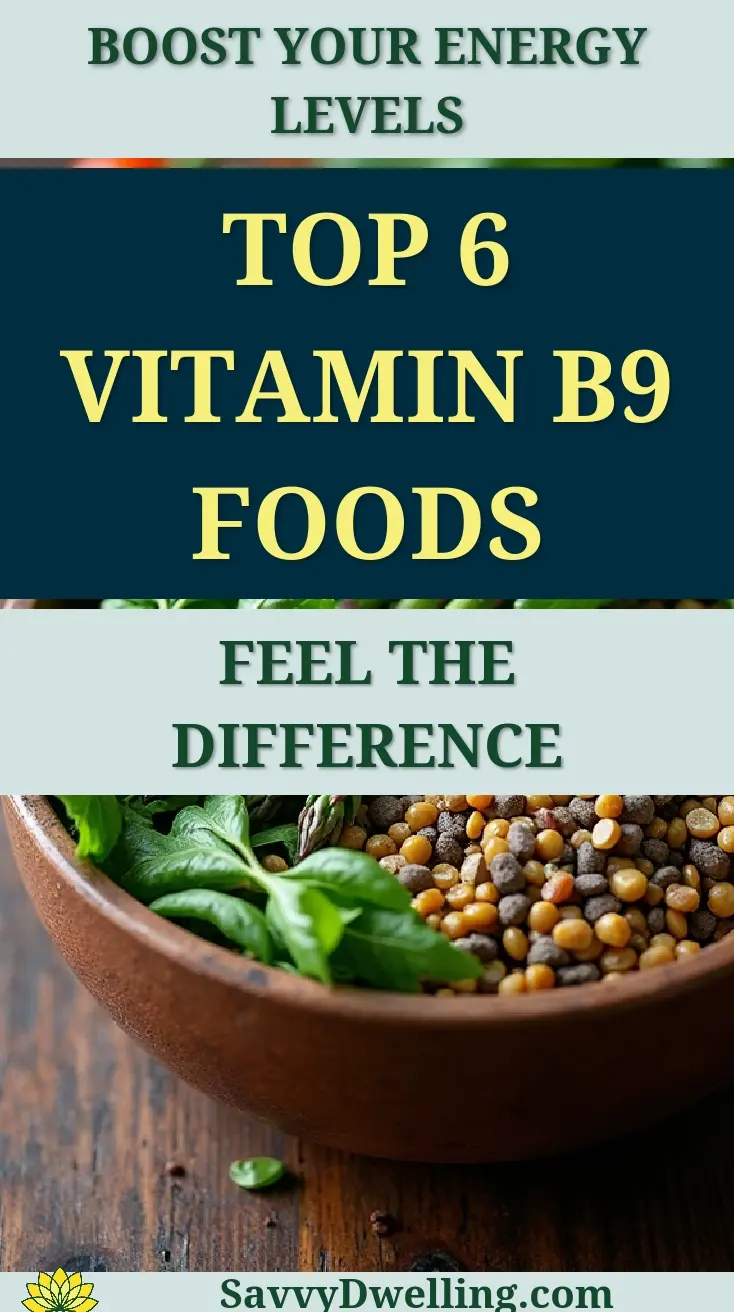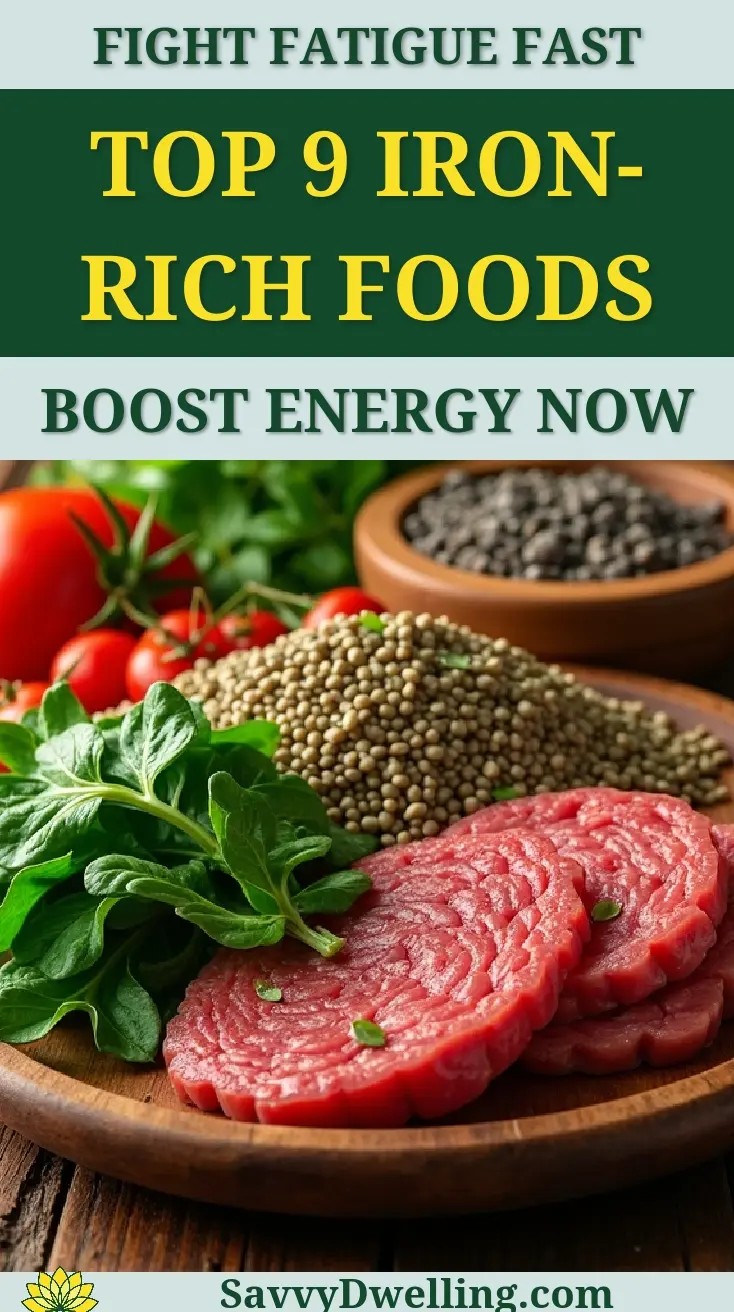Foods That Naturally Support Healthy Blood Pressure: Your Kitchen’s Hidden Power
Are you tired of watching your blood pressure numbers climb despite your best efforts? You’re not alone – millions of people struggle with hypertension, often feeling overwhelmed by conflicting dietary advice and wondering if food can really make a meaningful difference. The frustration of wanting to take control naturally while navigating endless “miracle cure” claims can leave you feeling more stressed than ever.
Here’s the encouraging news: specific foods have been scientifically shown to support healthy blood pressure levels, and you probably already have some of them in your kitchen. This guide cuts through the nutrition noise to bring you evidence-based food choices that can work alongside your current health plan. We’ll show you exactly which nutrients matter most, how they support your cardiovascular system, and simple ways to incorporate these blood pressure-friendly foods into meals you’ll actually enjoy eating.
Contents
- At a Glance: The Best Solutions
- 1. Potassium-rich Fruits and Vegetables
- 2. Heart-healthy Whole Grains and Fiber
- 3. Omega-3 Rich Foods
- 4. Magnesium and Calcium-rich Foods
- 5. Natural Flavor Enhancers That Support Blood Pressure
- 6. The DASH Diet Approach
- The Science Made Simple: Why High Blood Pressure Happens
- Common Mistakes to Avoid When Eating for Blood Pressure Support
- Frequently Asked Questions
- Final Words
At a Glance: The Best Solutions
If you’re looking for the best foods to lower blood pressure naturally, these six food categories offer the most significant support for healthy blood pressure levels. Each category targets different mechanisms that help your cardiovascular system function optimally.
Potassium-rich fruits and vegetables work by counterbalancing sodium’s effects on your blood vessels. Foods like leafy greens, bananas, and beets help your body maintain the delicate mineral balance needed for healthy circulation.
Heart-healthy whole grains and fiber support blood pressure by improving overall cardiovascular health and helping maintain steady blood sugar levels. Oats, quinoa, and brown rice provide sustained energy while supporting your heart.
Omega-3 rich foods reduce inflammation throughout your cardiovascular system. Fatty fish like salmon and plant sources like walnuts offer these beneficial fats that help keep blood vessels flexible and responsive.
Magnesium and calcium-rich foods help your blood vessels relax and contract properly. Nuts, seeds, and low-fat dairy products provide these essential minerals that work together to support healthy blood pressure.
Natural flavor enhancers like garlic and herbs allow you to reduce sodium while adding cardiovascular benefits. These foods that are good for blood pressure help you create flavorful meals without relying on salt.
The DASH diet approach combines all these elements into a proven eating pattern. This comprehensive method provides a structured way to incorporate all the best blood pressure lowering foods into your daily routine.
Each of these categories offers unique benefits, but they work best when combined as part of a balanced approach to eating for blood pressure support.
1. Potassium-rich Fruits and Vegetables
How Potassium Supports Healthy Blood Pressure
Your body needs potassium to help balance the effects of sodium in your bloodstream. When you consume enough potassium, it signals your kidneys to release excess sodium through urine, which helps relax blood vessel walls.
Potassium acts like a natural counterweight to sodium’s blood pressure-raising effects. Most adults need about 4,700 milligrams of potassium daily, yet studies show that over 90% of Americans fall short of this target.
Research consistently demonstrates that people who eat potassium-rich foods tend to have lower blood pressure readings. This mineral also helps your heart muscle contract more efficiently, supporting overall cardiovascular function.
Top Potassium Sources to Add to Your Meals
Leafy Greens (Spinach, Kale, Swiss Chard)
Leafy greens pack more potassium per serving than many other vegetables. One cup of cooked spinach delivers about 840 milligrams of potassium, nearly 18% of your daily needs.
Swiss chard stands out with over 960 milligrams of potassium per cooked cup. These greens also contain nitrates, compounds that help blood vessels relax and improve circulation.
Add handfuls of spinach to smoothies, toss kale into soups, or sauté Swiss chard with garlic as a side dish. The mild flavors blend easily into existing meals.
Bananas and Sweet Potatoes
A medium banana contains about 420 milligrams of potassium and makes an easy snack or smoothie addition. Sweet potatoes offer even more impressive numbers with roughly 540 milligrams per medium baked potato.
Sweet potatoes also provide beta-carotene and fiber, making them one of the best foods to lower your blood pressure naturally. Their natural sweetness satisfies cravings without added sugars.
Try sliced bananas on oatmeal, baked sweet potato rounds as a side dish, or mashed sweet potatoes instead of regular mashed potatoes.
Beets and Their Blood Pressure Benefits
Fresh beets contain natural nitrates that convert to nitric oxide in your body. This compound helps blood vessels dilate, potentially lowering blood pressure within hours of consumption.
Studies show that drinking beet juice can reduce systolic blood pressure by 4-10 mmHg. One cup of cooked beets also provides about 520 milligrams of potassium.
Roast beets with other vegetables, blend them into smoothies with berries to mask the earthy taste, or try pickled beets as a tangy salad topping.
Simple Ways to Increase Daily Potassium Intake
Building potassium into your routine doesn’t require dramatic dietary changes. Small, consistent additions can significantly boost your intake over time.
- Add a banana to your morning cereal or oatmeal
- Snack on dried apricots or raisins instead of processed snacks
- Replace regular potatoes with sweet potatoes twice per week
- Blend spinach into fruit smoothies
- Choose orange juice with pulp over other morning beverages
- Add white beans to salads and soups
- Keep pre-cut melon in your refrigerator for easy snacking

2. Heart-healthy Whole Grains and Fiber
Why Fiber Aids Blood Pressure Management
Soluble fiber forms a gel-like substance in your digestive tract that can help remove cholesterol from your body. This process supports healthier blood vessels and may contribute to lower blood pressure readings.
People who eat 25-30 grams of fiber daily typically see modest but meaningful reductions in both systolic and diastolic blood pressure. Fiber also helps you feel satisfied longer, supporting healthy weight management.
Whole grains provide sustained energy without the blood sugar spikes that refined grains cause. This steadier energy pattern puts less stress on your cardiovascular system throughout the day.
Best Whole Grain Options for Your Pantry
Oats and Overnight Oat Recipes
Steel-cut oats and rolled oats contain beta-glucan, a specific type of soluble fiber linked to blood pressure benefits. A bowl of oatmeal provides about 4 grams of fiber and helps you start the day with steady energy.
Overnight oats make it easy to enjoy this blood pressure food even on busy mornings. Simply combine oats with milk, yogurt, and your favorite toppings the night before.
Try these combinations: oats with sliced banana and cinnamon, or oats with berries and a tablespoon of ground flaxseed for extra omega-3s.
Quinoa and Brown Rice Alternatives
Quinoa cooks faster than most whole grains and provides complete protein along with fiber. One cup of cooked quinoa delivers about 5 grams of fiber and essential amino acids your body needs.
Brown rice contains more fiber and nutrients than white rice, making it one of the foods that are good for blood pressure support. Wild rice offers even more fiber and a nuttier flavor profile.
Use quinoa in place of rice in stir-fries, add cooked brown rice to soups, or try wild rice as a base for hearty salads with vegetables and beans.
Easy Meal Swaps for More Fiber
Simple substitutions can dramatically increase your fiber intake without changing your favorite meals. These swaps work with existing recipes and cooking habits.
- Choose whole wheat pasta instead of regular pasta
- Replace white bread with 100% whole grain bread
- Use brown rice instead of white rice in any recipe
- Add rolled oats to meatballs or meatloaf instead of breadcrumbs
- Mix quinoa into salads for extra texture and nutrition
- Choose whole grain cereals with at least 5 grams of fiber per serving
- Use whole wheat flour for half the all-purpose flour in baking recipes
Also See: 10 Surprising Reasons Dark Chocolate is a Superfood
3. Omega-3 Rich Foods
How Omega-3s Support Cardiovascular Health
Omega-3 fatty acids help reduce inflammation throughout your body, including in blood vessel walls. This anti-inflammatory effect can contribute to more flexible arteries and healthier blood pressure levels.
Research shows that people who eat omega-3 rich foods regularly may experience reductions in both systolic and diastolic blood pressure. These healthy fats also support heart rhythm and may reduce the risk of blood clots.
Your body cannot produce omega-3s on its own, making dietary sources essential. The two most beneficial types are EPA and DHA, found primarily in fatty fish and algae.
Best Fish Choices for Blood Pressure Support
Fatty Fish: Salmon, Mackerel, and Sardines
Wild-caught salmon provides about 1.8 grams of omega-3s per 3.5-ounce serving. Mackerel offers even more with approximately 2.6 grams, making it one of the most concentrated sources available.
Sardines deliver exceptional nutrition in a small package, with about 1.4 grams of omega-3s plus calcium from the soft bones. These smaller fish also contain lower mercury levels than larger fish species.
Aim for two servings of fatty fish per week. Grill salmon with herbs, add canned sardines to salads, or try smoked mackerel on whole grain crackers.
Plant-Based Omega-3 Sources
Flaxseeds, chia seeds, and walnuts contain ALA omega-3s, which your body converts to EPA and DHA in small amounts. Ground flaxseed provides better absorption than whole seeds. Adding flax seeds to your diet can be an easy way to boost your omega-3 intake. They offer numerous health benefits, such as supporting heart health and reducing inflammation.
Walnuts offer about 2.5 grams of ALA omega-3s per ounce, making them excellent foods for blood pressure support. Chia seeds provide 5 grams of omega-3s per ounce along with fiber and protein. Both walnuts and chia seeds are fantastic additions to a healthy diet, each offering unique benefits. Discovering the amazing health benefits of chia seeds can enhance overall wellness and nutrition.
Sprinkle ground flaxseed on yogurt or oatmeal, add walnuts to salads, or stir chia seeds into smoothies. These plant sources work well for vegetarians and vegans.
Weekly Meal Planning With Omega-3 Foods
Planning omega-3 rich meals ensures consistent intake throughout the week. This approach makes it easier to reach recommended amounts without feeling overwhelmed.
- Plan two fish meals per week – try baked salmon on Tuesday and sardine salad on Friday
- Add walnuts to your Monday morning oatmeal or yogurt
- Include ground flaxseed in Wednesday smoothies
- Sprinkle chia seeds on Thursday’s salad or soup
- Choose canned salmon for quick Saturday lunch options
- Keep frozen fish fillets on hand for easy weeknight dinners
- Batch cook quinoa with walnuts for multiple meals
4. Magnesium and Calcium-rich Foods
The Role Of These Minerals in Blood Pressure
Your blood vessels need magnesium and calcium to function properly, much like a well-tuned orchestra needs both string and wind instruments. Magnesium acts as a natural calcium channel blocker, helping your blood vessels relax and widen.
Calcium supports proper muscle contractions in your heart and blood vessel walls. When these minerals work together, they create a balanced environment that supports healthy blood pressure levels.
Research shows that people with adequate magnesium intake often have better blood pressure readings than those with deficiencies. The magic happens when both minerals are present in proper ratios. Not having enough magnesium can lead to various health issues, so it’s important to be aware of potential signs and symptoms of magnesium deficiency.
Top Food Sources to Include Daily
The best foods for blood pressure support combine both minerals naturally. Your body absorbs these nutrients more effectively from whole foods than from supplements.
Nuts and Seeds for Magnesium
Pumpkin seeds pack the highest magnesium punch, delivering about 150mg per ounce. That’s nearly 40% of your daily needs in just a small handful.
Other magnesium powerhouses include:
- Almonds (80mg per ounce)
- Cashews (75mg per ounce)
- Brazil nuts (65mg per ounce)
- Sunflower seeds (90mg per ounce)
- Sesame seeds (100mg per ounce)
Keep portions reasonable—about an ounce daily provides substantial benefits without excess calories.
Low-Fat Dairy and Calcium Options
Greek yogurt stands out as one of the best foods to lower your blood pressure because it combines calcium with probiotics. One cup provides about 300mg of calcium while supporting gut health.
Smart calcium choices include:
- Low-fat milk (300mg per cup)
- Cottage cheese (140mg per half cup)
- Kefir (300mg per cup)
- Sardines with bones (320mg per 3.5 ounces)
- Collard greens (270mg per cup cooked)
- Fortified plant milks (300-450mg per cup)
Dark Chocolate and Cocoa Benefits
Dark chocolate with at least 70% cocoa content offers a delicious way to boost magnesium intake. One ounce provides about 65mg of magnesium plus flavonoids that support blood vessel health.
Raw cocoa powder delivers even more benefits—two tablespoons contain 55mg of magnesium. Sprinkle it on yogurt or blend into smoothies for a heart-healthy treat.
Stick to small portions since chocolate is calorie-dense. An ounce of dark chocolate or two tablespoons of cocoa powder daily fits perfectly into a blood pressure-supporting diet.
Balancing These Nutrients Throughout Your Day
Spread your magnesium and calcium intake across meals for better absorption. Your body can only process about 500mg of calcium at once, so dividing doses maximizes benefits.
Start your morning with Greek yogurt topped with almonds and berries. Add sesame seeds to your lunch salad, and enjoy a small piece of dark chocolate after dinner.
Avoid taking calcium supplements with high-fiber meals, as fiber can interfere with absorption. Time your mineral-rich foods strategically for maximum blood pressure support.

5. Natural Flavor Enhancers That Support Blood Pressure
Why Reducing Sodium Matters
Excess sodium forces your kidneys to hold onto extra water, increasing blood volume and pressure throughout your circulatory system. Most Americans consume over 3,400mg of sodium daily—nearly double the recommended 1,500mg for blood pressure support.
The challenge isn’t just table salt. Processed foods, restaurant meals, and even seemingly healthy options like bread and soup contain hidden sodium that adds up quickly.
Reducing sodium by even 1,000mg daily can lower blood pressure significantly. The key is replacing salty flavors with herbs and spices that actually support cardiovascular health.
Blood Pressure Supporting Herbs and Spices
Many herbs and spices do double duty—they enhance flavor while providing compounds that support healthy blood pressure. This makes them some of the best foods that are good for blood pressure management.
Garlic and Its Cardiovascular Benefits
Fresh garlic contains allicin, a compound that helps blood vessels relax and may reduce blood pressure by 5-10 points. The effect is most pronounced with raw or lightly cooked garlic.
Aim for 2-3 fresh cloves daily. Crush or chop garlic and let it sit for 10 minutes before cooking to maximize allicin formation. Add it to sauces, dressings, and marinades for maximum flavor impact. Regularly incorporating garlic into your diet can lead to numerous health benefits. From boosting immunity to improving cardiovascular health, the daily consumption of garlic makes a significant difference.
Roasted garlic becomes sweet and mellow, perfect for spreading on whole grain bread or mixing into mashed cauliflower as a lower-sodium side dish.
Herbs That Add Flavor Without Salt
Fresh herbs pack more flavor punch than their dried counterparts and contain beneficial plant compounds. Basil, oregano, and thyme all contain compounds that may support healthy blood pressure levels.
Powerful flavor combinations include:
- Rosemary with lemon zest for roasted vegetables
- Cilantro and lime for Mexican-inspired dishes
- Dill and cucumber for refreshing summer salads
- Fresh mint in fruit salads and beverages
- Parsley mixed with garlic for a simple sauce base
Low-sodium Seasoning Combinations
Create your own salt-free blends that deliver complex flavors without relying on sodium. These combinations work as some of the best solutions for lowering blood pressure through diet.
Mediterranean blend: Mix dried oregano, basil, thyme, garlic powder, and black pepper. Perfect for vegetables, fish, and chicken.
Asian-inspired mix: Combine ginger powder, garlic powder, sesame seeds, and red pepper flakes. Excellent for stir-fries and marinades.
Store homemade blends in airtight containers and use within six months for peak flavor. Label them clearly and keep several varieties on hand for meal variety.
6. The DASH Diet Approach
Understanding the DASH Eating Pattern
The DASH (Dietary Approaches to Stop Hypertension) diet isn’t a restrictive plan—it’s a balanced eating pattern that emphasizes the best foods to lower your blood pressure naturally. Research shows DASH can reduce blood pressure by 8-14 points within just two weeks. Following a DASH diet meal plan can provide a simple yet effective way to manage hypertension. It focuses on whole foods like fruits, vegetables, and whole grains that are high in nutrients but low in sodium, making it an excellent choice for blood pressure control.
This approach focuses on increasing foods that lower blood pressure while moderately reducing sodium intake. You’ll eat more fruits, vegetables, whole grains, and lean proteins while limiting processed foods and added sugars.
The beauty of DASH lies in its flexibility. You can adapt the principles to any cuisine or dietary preference while maintaining its blood pressure benefits.
Building Your Plate the DASH Way
Think of your plate as a canvas where each section supports healthy blood pressure. Half your plate should feature fruits and vegetables, one quarter whole grains, and one quarter lean protein.
Add small amounts of nuts, seeds, or healthy fats to complete the picture. This visual approach makes meal planning simple and ensures you’re getting the best blood pressure lowering foods at every meal.
Daily Serving Guidelines
DASH serving sizes are realistic and sustainable for long-term success. These portions provide optimal nutrition without requiring complicated calculations:
- Vegetables: 4-5 servings (1 cup raw leafy greens or ½ cup cooked)
- Fruits: 4-5 servings (1 medium fruit or ½ cup fresh/frozen)
- Whole grains: 6-8 servings (1 slice bread or ½ cup cooked grain)
- Lean proteins: 6 ounces or less (3 ounces = palm-sized portion)
- Low-fat dairy: 2-3 servings (1 cup milk or yogurt)
- Nuts/seeds: 4-5 servings per week (⅓ cup or 2 tablespoons)
- Healthy fats: 2-3 servings (1 tablespoon oil or ½ avocado)
Sample 3-Day Meal Plan
Day 1:
- Breakfast: Oatmeal with sliced banana, chopped walnuts, and cinnamon
- Lunch: Spinach salad with grilled chicken, chickpeas, and olive oil vinaigrette
- Dinner: Baked salmon with roasted sweet potato and steamed broccoli
- Snacks: Greek yogurt with berries, handful of almonds
Day 2:
- Breakfast: Smoothie with spinach, banana, Greek yogurt, and ground flaxseed
- Lunch: Quinoa bowl with black beans, diced tomatoes, and avocado
- Dinner: Herb-roasted chicken with brown rice and sautéed kale
- Snacks: Apple slices with almond butter, low-sodium vegetable soup
Day 3:
- Breakfast: Whole grain toast with mashed avocado and sliced tomato
- Lunch: Lentil soup with mixed green salad and whole grain roll
- Dinner: Grilled fish tacos with cabbage slaw and black bean salad
- Snacks: Mixed berries with cottage cheese, small handful of pumpkin seeds
Adapting DASH Principles to Your Lifestyle
DASH works because it’s flexible enough to fit different schedules, budgets, and food preferences. Focus on gradually increasing the foods that can lower blood pressure rather than eliminating everything at once.
Busy schedules call for simple swaps: Choose whole grain bread over white, add extra vegetables to pasta sauce, or snack on fruit instead of chips. These small changes compound into significant blood pressure benefits over time.
Meal prep supports DASH success. Wash and chop vegetables on weekends, cook grains in batches, and portion nuts into small containers. Having blood pressure food ready makes healthy choices effortless during hectic weekdays.
The Science Made Simple: Why High Blood Pressure Happens
Think of your blood vessels like garden hoses carrying water throughout your body. When pressure builds up inside these “hoses,” your heart works overtime to push blood through narrowed or stiff pathways.
High blood pressure develops when your cardiovascular system faces ongoing stress from multiple sources. These include excess sodium, inadequate potassium, chronic inflammation, and blood vessels that lose their flexibility over time.
How Diet Affects Blood Vessel Health
Your blood vessels are living tissues that respond directly to what you eat. Foods rich in antioxidants help keep vessel walls smooth and flexible, while processed foods can cause them to become stiff and narrow.
Nitrates from beets and leafy greens actually help your blood vessels relax and widen. This natural process, called vasodilation, reduces the pressure your heart needs to generate.
The foods that lower blood pressure work by supporting your blood vessels’ natural ability to expand and contract efficiently. Meanwhile, excessive sugar and unhealthy fats can damage the delicate lining of your arteries.
The Sodium-potassium Balance
Your body maintains blood pressure through a delicate dance between sodium and potassium. Sodium tells your body to hold onto water, while potassium signals it to release excess fluid.
Most people consume far too much sodium (often hidden in processed foods) and not enough potassium from fresh produce. This imbalance forces your kidneys to work harder and increases fluid retention.
The best foods for blood pressure contain high amounts of potassium to counteract sodium’s effects. Bananas, sweet potatoes, and spinach are among the top potassium-rich choices that help restore this crucial balance. Incorporating these potassium-rich foods into your diet can significantly benefit heart health. Not only do they help manage blood pressure, but they also form a key part of the top potassium-rich foods for a healthy heart.
Inflammation and Blood Pressure Connection
Chronic inflammation acts like sandpaper on your blood vessel walls, making them rough and narrow. This forces your heart to pump harder to maintain adequate blood flow.
Omega-3 fatty acids from fish and flaxseeds work as natural anti-inflammatory agents in your bloodstream. They help calm irritated blood vessels and support smoother blood flow.
Foods that are good for blood pressure often contain compounds that actively reduce inflammation throughout your cardiovascular system. Dark berries, fatty fish, and nuts provide these protective anti-inflammatory benefits.
Common Mistakes to Avoid When Eating for Blood Pressure Support
Even with the best intentions, many people make simple errors that limit their success with dietary blood pressure management. Avoiding these common pitfalls can significantly improve your results.
The most effective approach combines multiple strategies rather than relying on a single dietary change. Understanding these mistakes helps you create a more comprehensive and sustainable eating plan.
Focusing Only on Avoiding Salt
While reducing sodium is important, many people become obsessed with salt avoidance and ignore other crucial factors. This tunnel vision approach misses powerful opportunities to support blood pressure through positive additions to your diet.
The best foods to lower blood pressure work through multiple mechanisms beyond just sodium reduction. Potassium, magnesium, fiber, and omega-3s all play essential roles that salt restriction alone cannot address.
A balanced approach includes both reducing harmful foods and actively adding beneficial ones to your meals. Focus on crowding out processed foods with nutrient-dense whole foods rather than just eliminating salt.
Making Too Many Changes at Once
Overhauling your entire diet overnight often leads to frustration and abandonment of healthy eating goals. Your taste buds and digestive system need time to adapt to new foods and flavors.
Start with one or two specific changes, such as adding a daily serving of leafy greens or swapping white rice for quinoa. Master these changes before introducing additional modifications.
Sustainable blood pressure improvement comes from gradual changes that become lasting habits. Pick foods that help high blood pressure and introduce them slowly into your regular rotation.
Ignoring Portion Sizes
Even healthy foods can contribute to blood pressure problems when consumed in excessive amounts. Large portions can lead to weight gain, which directly impacts cardiovascular health.
Use your hand as a portion guide: a palm-sized serving of protein, a cupped handful of grains, and a fist-sized portion of vegetables. This simple system works anywhere without requiring scales or measuring cups.
The best solutions for lowering blood pressure include appropriate portion control alongside food quality improvements. Even foods for blood pressure support need to be eaten in reasonable quantities.
Not Monitoring Your Response
Individual responses to dietary changes vary significantly. What works perfectly for one person may have minimal impact on another, making personal monitoring essential.
Keep a simple food and blood pressure log for at least two weeks when implementing changes. Note which foods that lower blood pressure seem most effective for your specific situation.
Regular blood pressure checks help you identify which dietary modifications provide the greatest benefit. This data allows you to fine-tune your approach based on actual results rather than guesswork.
Forgetting About Drug-food Interactions
Certain blood pressure medications can interact with specific foods, potentially affecting their effectiveness. High-potassium foods may need monitoring if you take ACE inhibitors or potassium-sparing diuretics.
Grapefruit can interfere with some calcium channel blockers, while excessive licorice consumption may counteract various blood pressure medications. Always inform your healthcare provider about significant dietary changes.
Coordinate your food choices with your medical team to ensure your diet supports rather than interferes with prescribed treatments. The best foods for lower blood pressure work most effectively when properly integrated with your overall healthcare plan.

Frequently Asked Questions
How Quickly Can I Expect to See Improvements in My Blood Pressure After Changing My Diet?
Dietary changes can start affecting blood pressure within a few weeks, but individual results vary based on factors like consistency and starting levels. Focus on consistent daily habits, such as adding potassium-rich fruits to breakfast and choosing whole grains, to support gradual improvement. For best results, combine diet with regular monitoring and follow-up with your healthcare provider to track progress.
Are There Any Specific Foods I Should Avoid Entirely When Managing High Blood Pressure?
While no food needs to be banned completely, it’s wise to limit processed meats, canned soups, and salty snacks, as they are often high in sodium and preservatives. Instead, opt for fresh or frozen vegetables and lean proteins. Reading nutrition labels can help you identify hidden sodium and make smarter swaps, like choosing unsalted nuts over salted varieties.
Can I Still Enjoy Desserts or Sweet Treats While Following a Blood Pressure-friendly Diet?
Yes, in moderation! Choose desserts rich in nutrients, like dark chocolate (70% cocoa or higher) or fruit-based options, such as baked apples with cinnamon. Avoid sugary baked goods and sodas, which can contribute to inflammation. For a simple treat, try blending frozen bananas for a creamy “ice cream” alternative that adds potassium without excess sugar. Including foods that combat inflammation in your diet, such as berries and leafy greens, can further enhance your health and well-being.
How Does Physical Activity Interact With Dietary Changes for Blood Pressure Control?
Exercise complements diet by improving heart health and aiding weight management, which can enhance the blood pressure-lowering effects of foods like omega-3 rich fish and leafy greens. Aim for at least 30 minutes of moderate activity, like brisk walking, most days. Pairing this with a balanced diet, such as having a post-workout snack like yogurt and berries, can maximize benefits.
What Are Some Tips for Eating Out or Ordering Takeout Without Compromising Blood Pressure Goals?
When dining out, request dressings and sauces on the side, and choose grilled or steamed dishes over fried options. Look for menus highlighting whole grains and vegetables, and ask for no added salt. For takeout, opt for cuisines like Mediterranean, which often feature blood pressure-friendly ingredients like olives and herbs, and share portions to avoid overeating.
Final Words
Making food choices that support healthy blood pressure doesn’t have to feel overwhelming or restrictive. By focusing on potassium-rich fruits and vegetables, heart-healthy whole grains, omega-3 foods, and natural flavor enhancers, you’re building a foundation that works with your body’s natural processes. Small, consistent changes like swapping white rice for quinoa or adding a handful of nuts to your afternoon snack can create meaningful impacts over time.
Remember that every person responds differently to dietary changes, and what works best for you might take some experimentation. Start with one or two categories from this guide and gradually build your blood pressure-supporting eating pattern at a pace that feels sustainable. Your taste buds will adapt, and you’ll likely find these nutrient-dense foods more satisfying than you expected.
Ready to transform your kitchen into a blood pressure-friendly zone? Check out Savvy Dwelling for more practical wellness tips and home solutions that support your healthiest life. Take the first step today by choosing one new food from this guide to add to your next grocery list.


